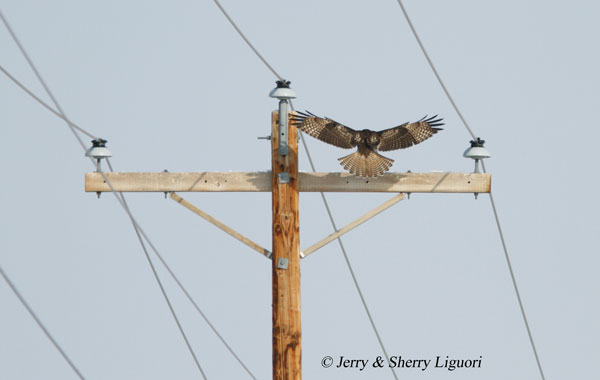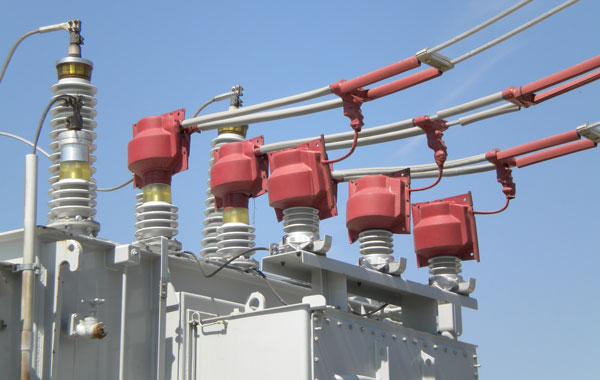Electrical Infrastructure and Renewable Energy/Power lines
Electricity 101:
As communities grow, the demand for electricity increases, requiring additional power lines to meet this demand. Power is generated at facilities such as coal, natural gas, nuclear power plants, hydro generation sites, or wind or solar facilities, then moves along transmission lines at high voltages, through substations, and into distribution lines to homes and businesses. The more miles of power lines there are, the greater potential for birds to interact with electrical facilities. Due to their high voltages, transmission lines are typically designed with large separations between energized conductors. Therefore, transmission lines typically do not pose bird electrocution risks. Transmission lines may be configured with energized conductors below and an overhead grounding conductor, or “static wire”, above. This static wire is often a thinner diameter than the energized conductors, and may pose a bird collision risk in certain habitats or for certain species. Distribution lines, unless constructed using avian-safe (see Frequently Asked Questions for definition) framing, have closer spacing between conductors and may pose bird electrocution risks. Bird collisions may also occur with distribution lines in certain habitats or for certain species.
Substations may pose bird electrocution risks, depending on the voltage and spacing. Like power poles, the higher, transmission voltage sections of substations, are typically framed with adequate separation to protect large birds. However, the lower, distribution voltage sections of substations may pose electrocution risks. While substation retrofitting is more costly and complex than pole retrofitting, numerous manufacturers design bird protection products for substations.
Power Lines and Renewable Energy :
APLIC is focused on bird and power line interactions, and the Suggested Practices and other APLIC resources are intended as guidance specifically for these issues. However, many APLIC member utilities also manage avian issues at other types of facilities including wind, solar, and hydroelectric. Thus, some utilities may opt to address these types of facilities in their APPs to provide consistent procedures for addressing avian issues and concerns company-wide, and many of the components of an APP may also apply to renewable or other generation facilities. Learn more (Poles at Wind Energy Facilities (lunasoft.com)
In addition, APLIC developed recommendations for partnering with Wind companies to implement a compensatory mitigation power pole retrofit strategy under an Eagle Incidental Take Permit. Learn more (Link to Power Pole Modification Guidance doc.)



